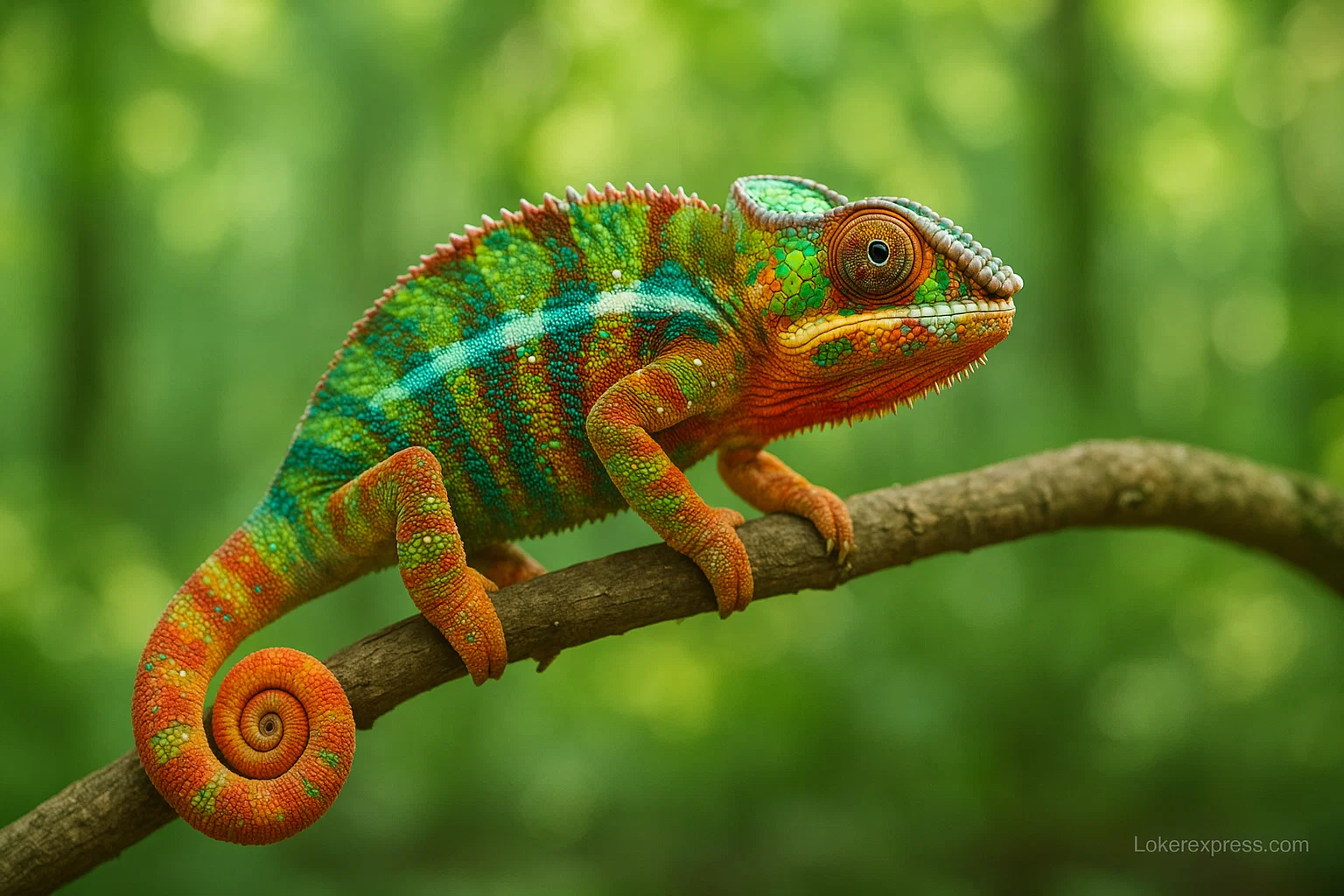When I first came across a chameleónovité in the wild, I almost didn’t notice it. Its skin blended into the leaves so well that I only saw it when its eyes turned to watch me. That experience showed me why these reptiles fascinate so many people. They are more than just color-changing lizards—they are a group of highly adapted creatures with unique traits, survival strategies, and important roles in nature.
This guide takes you through everything you need to know about chameleónovité: their biology, habitats, behavior, care in captivity, and conservation issues. Along the way, I’ll share insights from personal encounters and years of observing these lizards in both wild and controlled environments.
What Are Chameleónovité?
The word chameleónovité refers to the family Chamaeleonidae, a group of lizards known for their unusual abilities. They are found mainly in Africa, Madagascar, southern Europe, and parts of Asia. Unlike most lizards, they are slow-moving, tree-dwelling reptiles with features that make them stand out from any other reptile family.
Chameleónovité are most famous for their ability to change colors. While many people think this is simply camouflage, the truth is far more fascinating. Their colors shift depending on mood, body temperature, communication needs, and even social status. This ability, combined with their rotating eyes and lightning-fast tongues, makes them one of the most specialized reptile groups in the world.
Habitat and Geographic Range
Chameleónovité live in a wide range of environments. The highest diversity is found in Madagascar, where dozens of species are unique to the island. They thrive in tropical rainforests, dry savannas, and even rocky scrublands. In East Africa, I have seen them perched on thorn bushes under the blazing sun, while in Madagascar they disappear into the canopy of lush green forests.
One striking thing about their habitats is that they rely heavily on vertical space. Chameleónovité spend most of their lives in trees or shrubs. Their bodies are designed for climbing, and they feel safest when surrounded by branches and foliage. Even in captivity, they need enclosures with height rather than width, because they instinctively move upward when searching for food or safety.
Physical Traits That Make Them Unique
The first thing you notice about chameleónovité is their feet. Their toes are fused into groups that form a pincer-like grip. This design helps them grasp branches firmly as they move slowly and carefully. Their tails are prehensile, meaning they can curl around branches like an extra hand, giving them perfect balance high above the ground.
Their eyes are another wonder. Each eye moves independently, giving them nearly 360-degree vision. This allows them to scan for predators and prey without moving their heads. When they spot an insect, both eyes lock forward, providing depth perception for their famous tongue strike. Watching this in real life is unforgettable—the tongue shoots out with explosive force and precision, catching the prey in less than a second.
Sizes and Species Diversity
The family of chameleónovité includes both giants and miniatures. On the small side, species like Brookesia nana from Madagascar are barely an inch long, making them some of the smallest vertebrates in the world. Holding one feels like balancing a tiny twig on your hand. At the opposite extreme, the Oustalet’s chameleon can grow over two feet long, with powerful jaws and strong colors.
Between these extremes are popular species such as the veiled chameleon (Chamaeleo calyptratus), known for the tall casque on its head, and the panther chameleon (Furcifer pardalis), which displays vivid red, blue, green, and orange patterns. Each species has unique characteristics and behaviors, and many are prized by reptile enthusiasts for their appearance and rarity.
The Truth About Color Changing
The ability of chameleónovité to change color is often misunderstood. While camouflage plays a role, especially for hiding from predators, the main reasons are communication and body regulation. Males often flash bright colors during mating season or when challenging rivals. Females may darken their skin to show rejection.
Scientifically, this ability comes from specialized cells in their skin called chromatophores. These cells contain pigments and reflective structures that expand or contract to produce different colors. For example, a calm chameleon may appear light green, while a stressed or aggressive one may turn dark brown or even black. Observing these changes up close is like watching a living mood ring.
Behavior and Life Cycle
Chameleónovité are generally solitary animals. In the wild, they spend most of their time alone, hunting insects or basking quietly in the sun. When two males meet, conflict often occurs. They use colors and body posture to display dominance, and physical fights are rare but not unheard of.
The life cycle of chameleónovité varies by species. Most lay eggs, which incubate for several months in soil or leaf litter. Some species give live birth. I once observed a female veiled chameleon digging carefully in the soil, searching for the right place to lay her eggs. She worked for hours before covering the clutch and leaving, ensuring the eggs would remain hidden from predators.
Caring for Chameleónovité as Pets
Many reptile lovers dream of keeping a chameleónovité at home. While they can make fascinating pets, they require specialized care. Their enclosures must be tall and well-ventilated, with climbing branches and live plants for cover. A simple glass tank will not work—they need fresh airflow and humidity.
Lighting and temperature are crucial. They depend on UVB lighting to process calcium, preventing bone disease. They also need a gradient of temperatures: a warm basking area and cooler shaded spots. Proper hydration is another challenge, since they rarely drink from bowls. Misting the enclosure and providing drip systems helps mimic natural dew and rainfall. With the right care, captive-bred individuals can live healthy and stress-free lives.
Conservation Challenges
In the wild, many species of chameleónovité face serious threats. Habitat destruction from farming, logging, and urban expansion is the biggest problem. On my last trip to Madagascar, I saw wide areas of forest cleared for rice fields, leaving little space for wildlife. For species with very limited ranges, this can be devastating.
The pet trade has also affected populations. While captive breeding has improved in recent years, some species are still collected from the wild. This often leads to stress and high mortality rates. Supporting responsible breeding programs and habitat protection is the best way to ensure that these lizards survive for future generations.
Lessons From Observing Chameleónovité
Spending time with chameleónovité has taught me valuable lessons. Watching them move slowly and deliberately reminds me of patience. Their ability to change colors so gracefully shows how living creatures adapt to survive and communicate. One of the most memorable moments for me was finding a camouflaged chameleon in the branches at dusk, its colors shifting as the light faded. That moment taught me that nature always has surprises waiting if you take the time to look closely.
Whether in the wild or in captivity, chameleónovité inspire curiosity and respect. They may be small, but they carry an enormous sense of wonder.
Read More: Competitive Edge The SerpentRogue
Final Thoughts
Chameleónovité are not just exotic lizards—they are living marvels of evolution. Their feet, eyes, tails, and colors all serve a purpose that has been refined over millions of years. They play important roles in ecosystems, controlling insect populations and serving as indicators of environmental health.
For anyone interested in nature, reptiles, or even just the beauty of life’s diversity, learning about chameleónovité is deeply rewarding. From personal experience, I can say that once you spend time with these creatures, you’ll never see a forest or even a garden branch in the same way again.

